Yesterday morning I scored a Trifecta, or I should say the fruits trees of Big Falls, Minnesota in the Pine Island State Forest hit the Trifecta. I always pay attention when birding any time of the year to where there are large concentrations of mountain ash and pygmy crabapple trees because I know the “birds of winter” will eventually visit.
Such was the case yesterday when I found not one species, or two but all three species of birds which have been scarce this winter … often in the same exact tree at the same time, which led to some disagreements over who was allowed the choicest berries. Thus I bring you the birds of the northern winter … Bohemian Waxwings, Evening Grosbeaks, and Pine Grosbeaks. I spent over an hour watching the pig-out. Better yet, I also saw some birds which needed to be thrown into the Hoosegow! Yup, eating a lot of berries eventually means drunk birds as the fermentation process starts in their gizzards. Everyone was happy, including me but I would have to wait for dinner before I joined with a glass of Chardonnay.
A Disagreement between an Evening Grosbeak and Bohemian Waxwing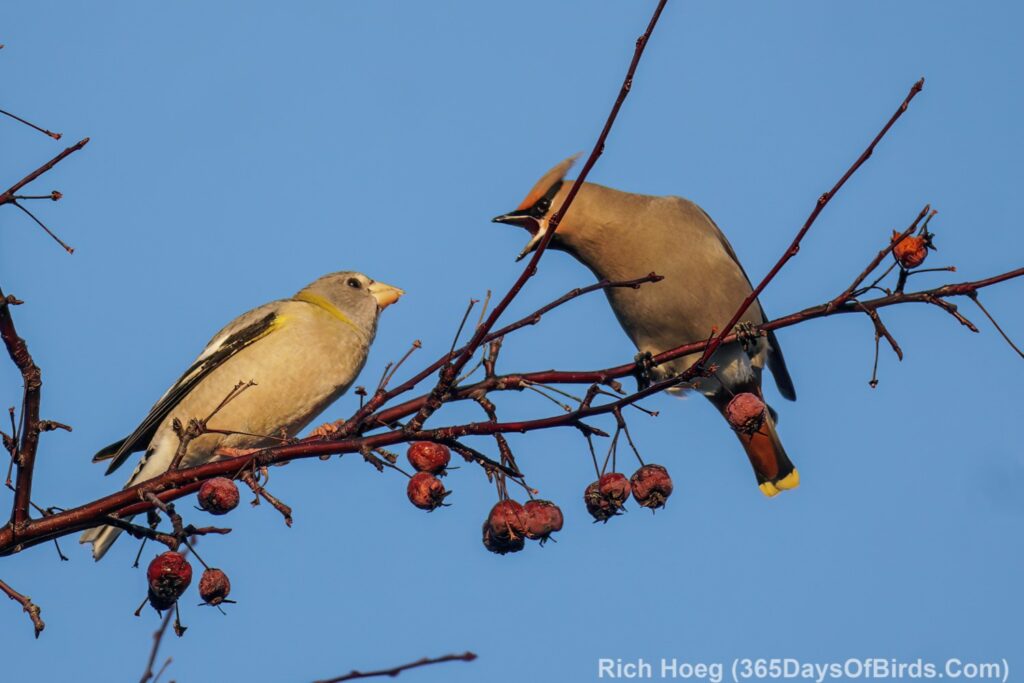
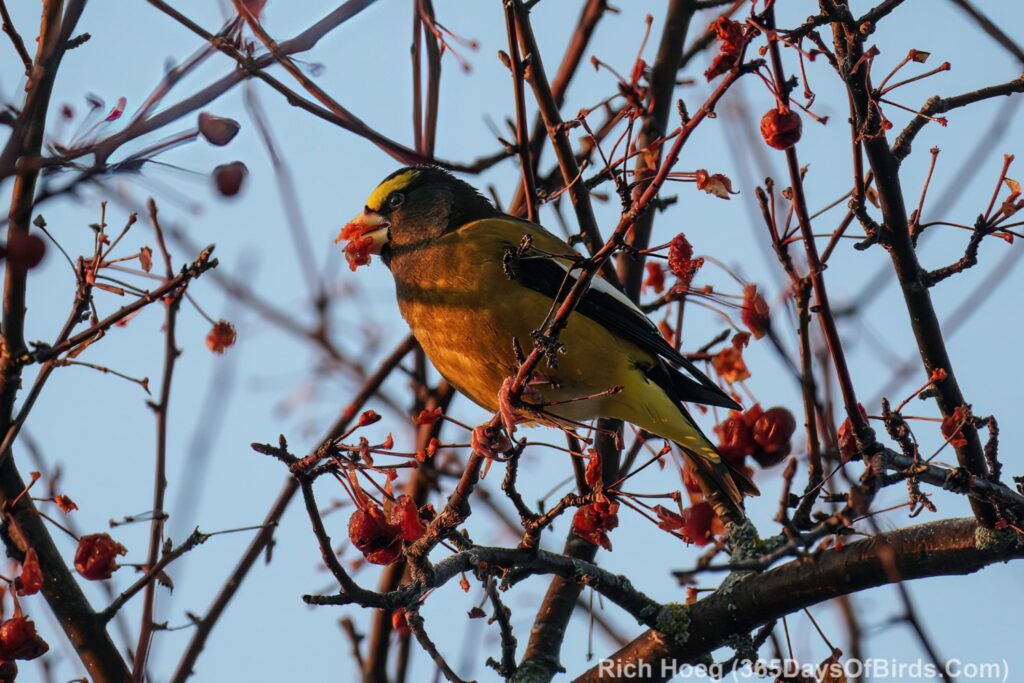
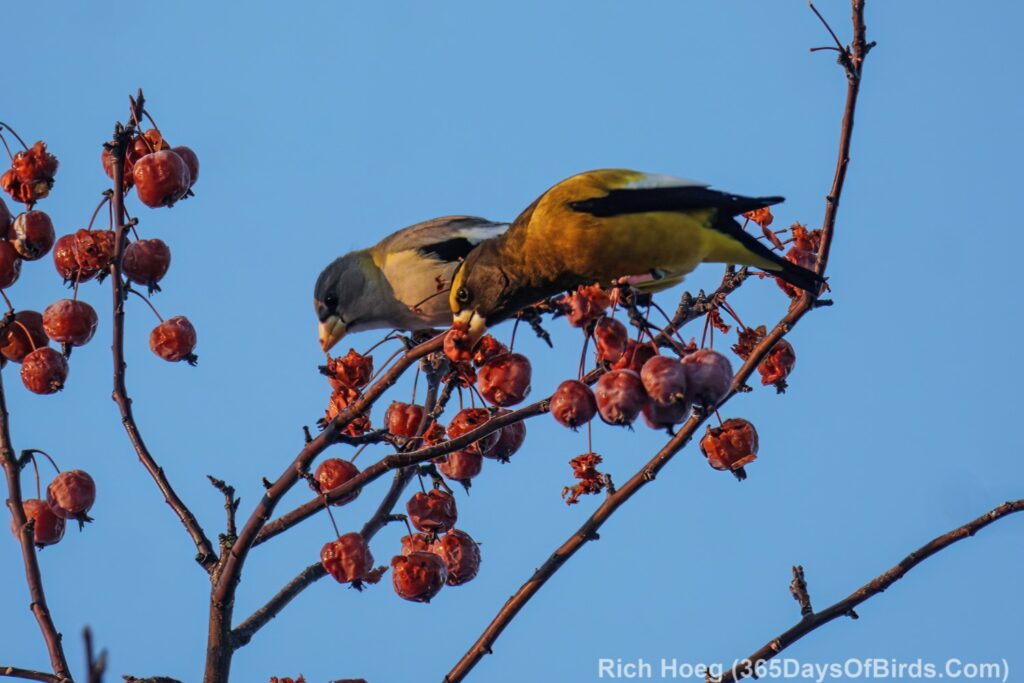
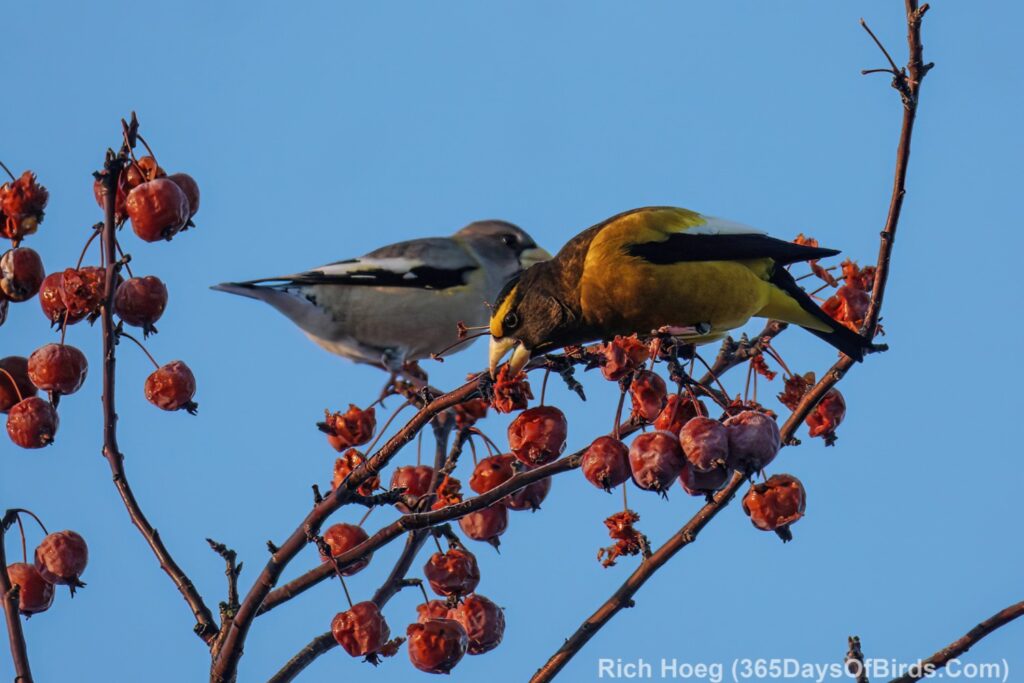
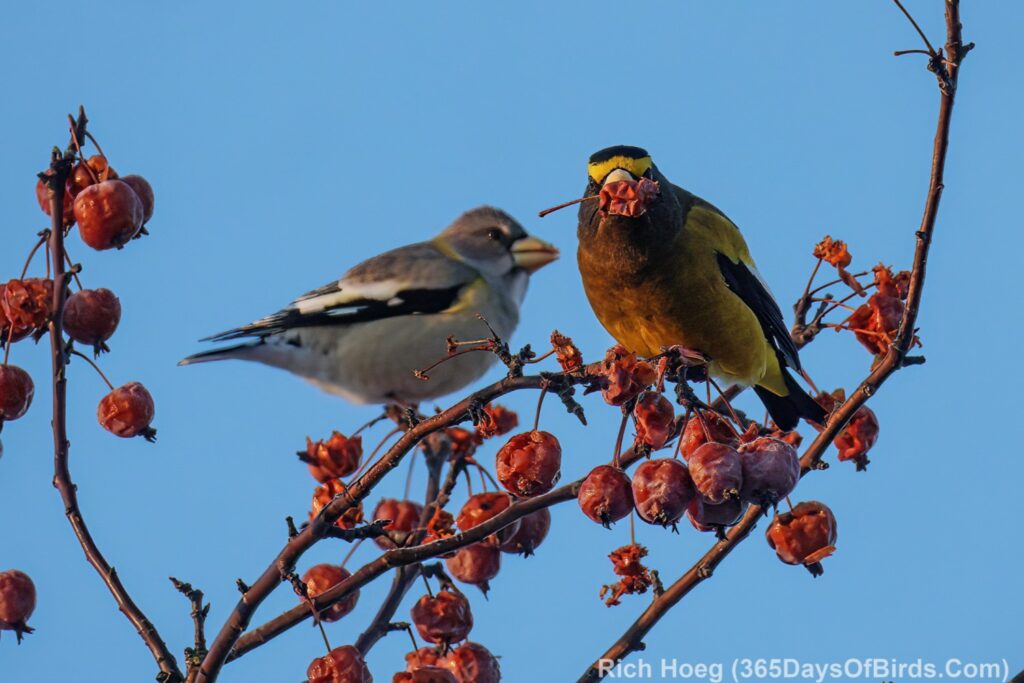
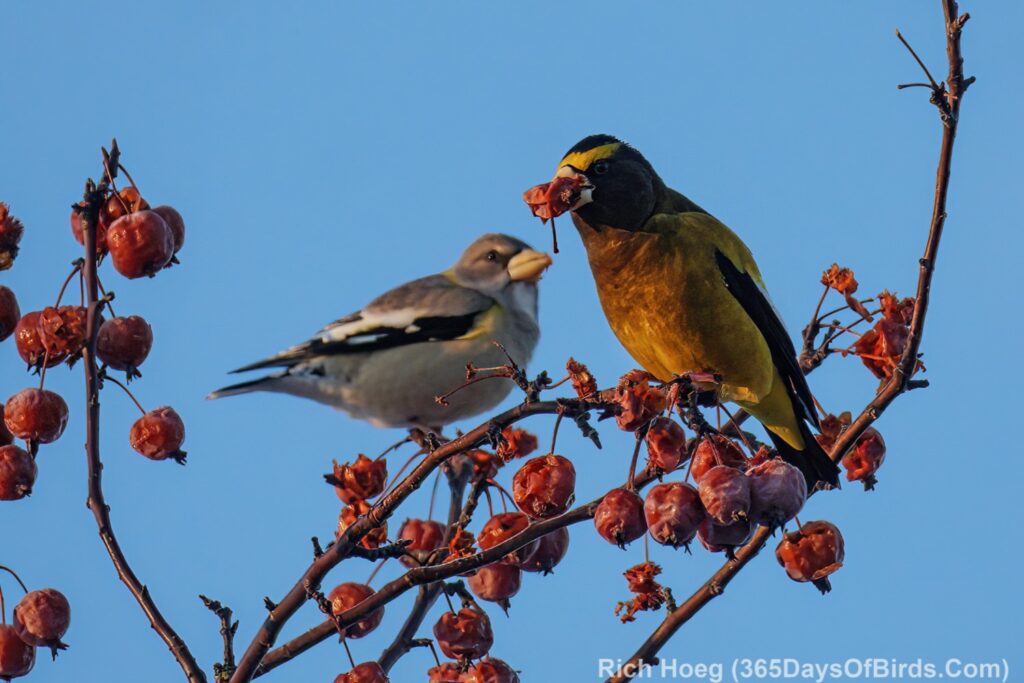
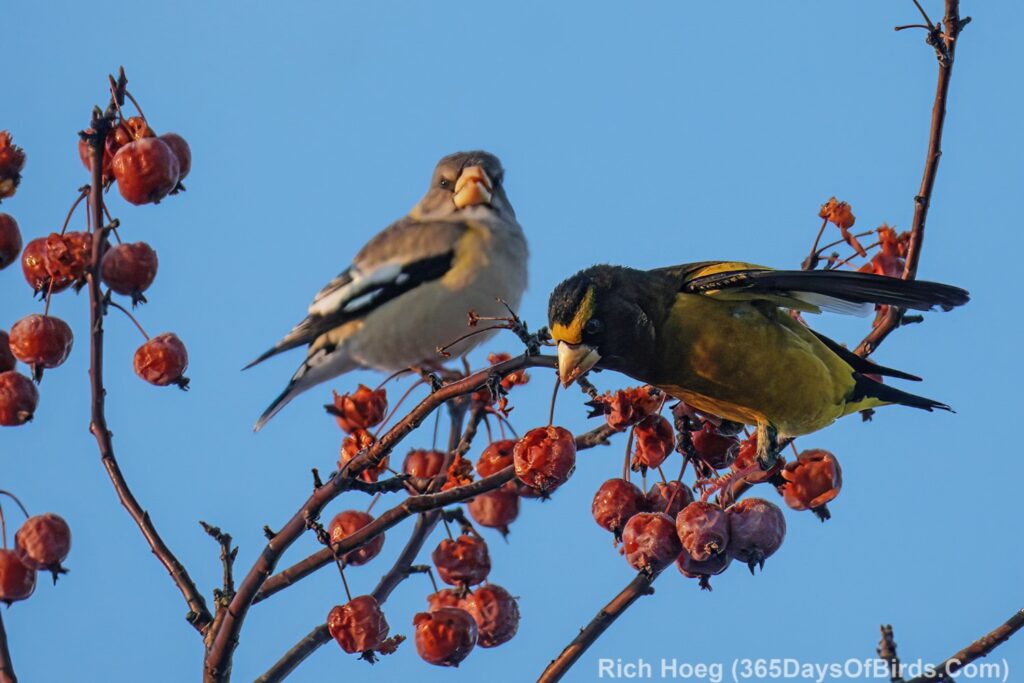
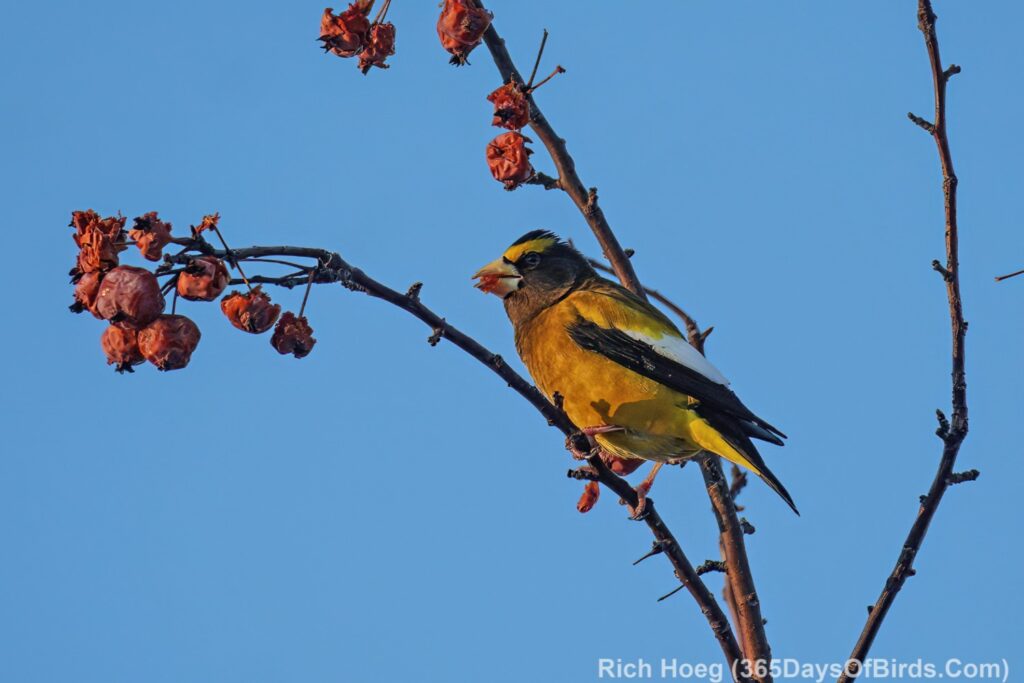
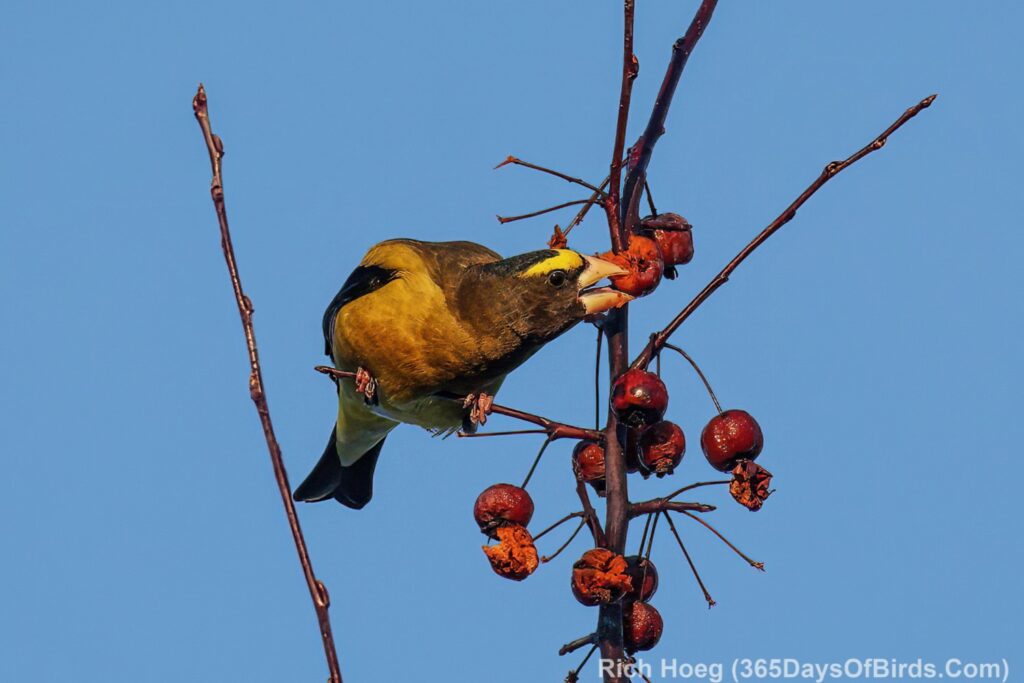
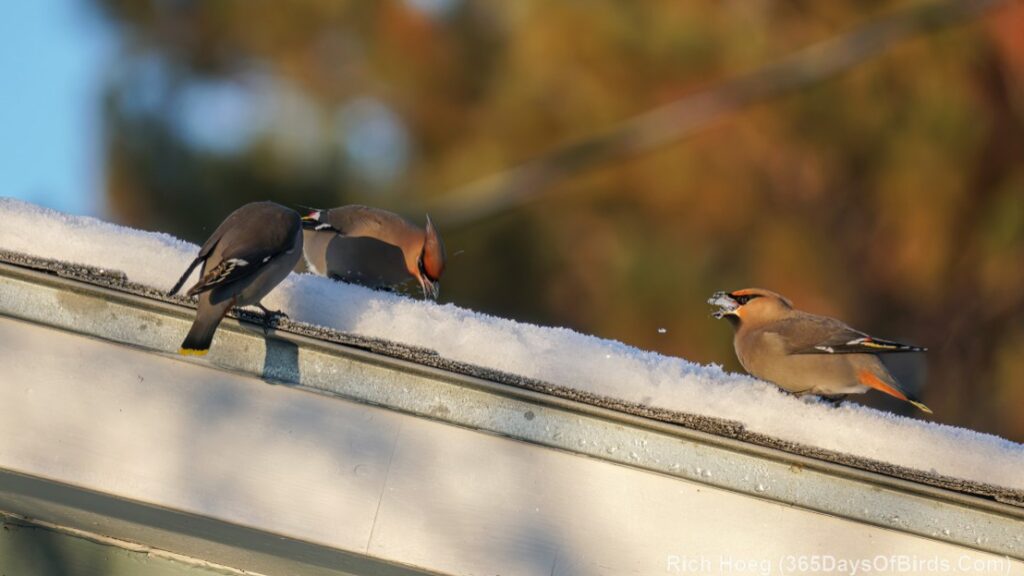
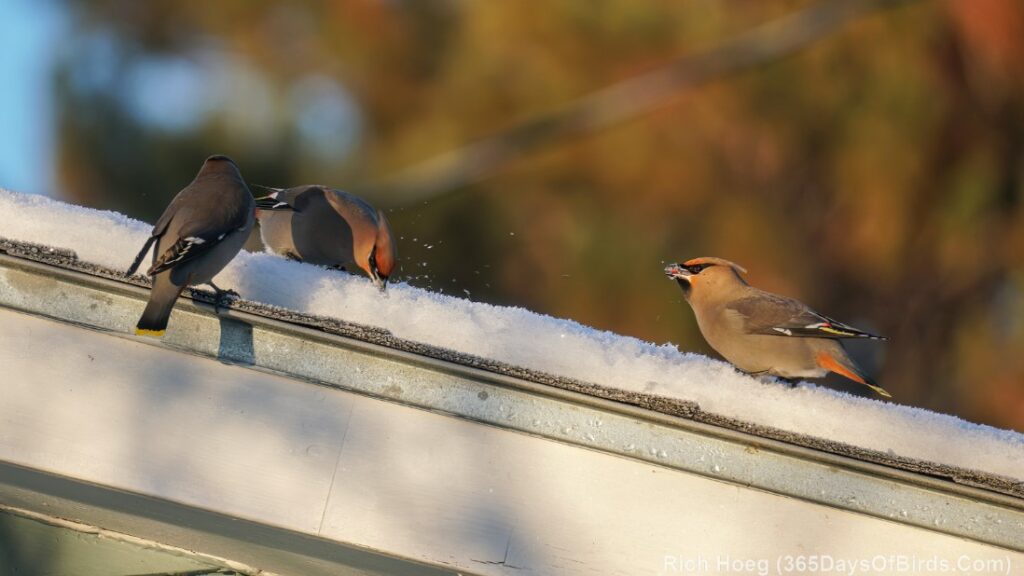
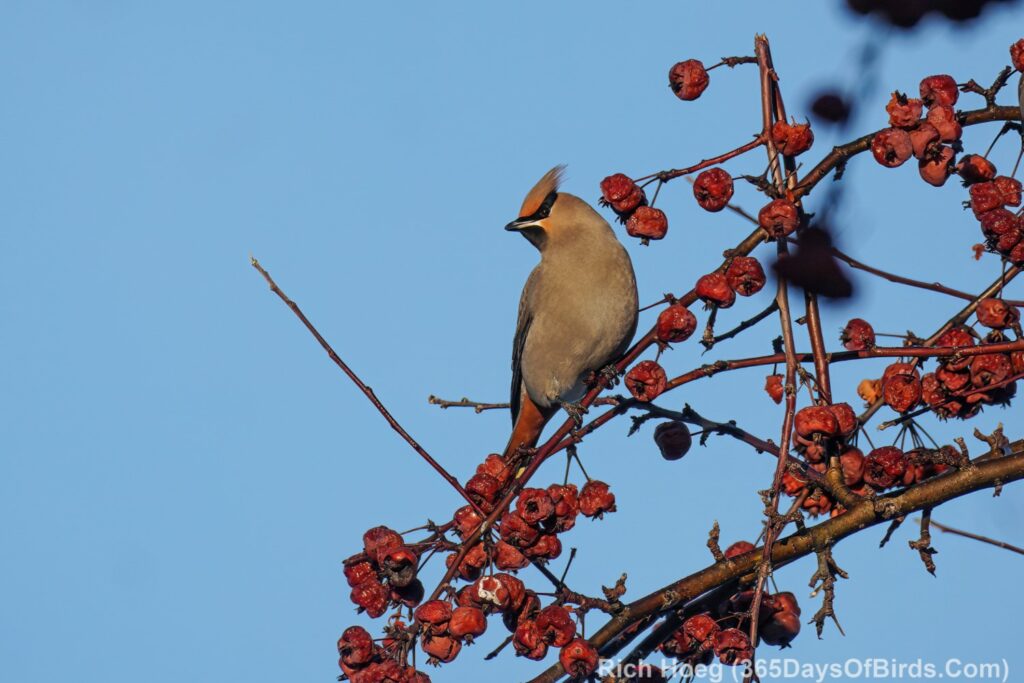
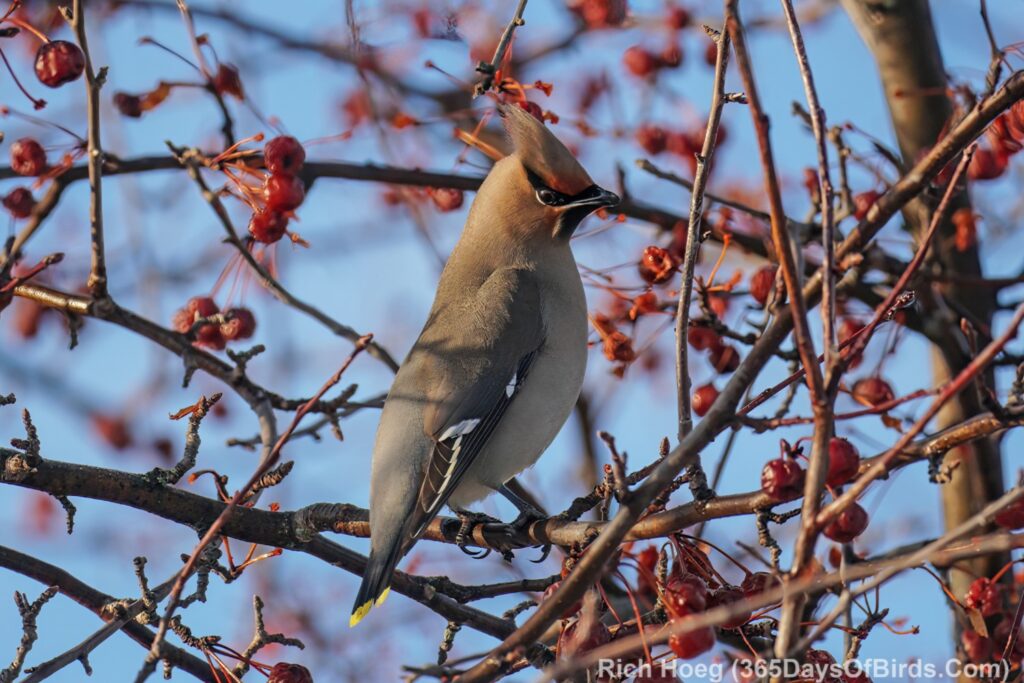
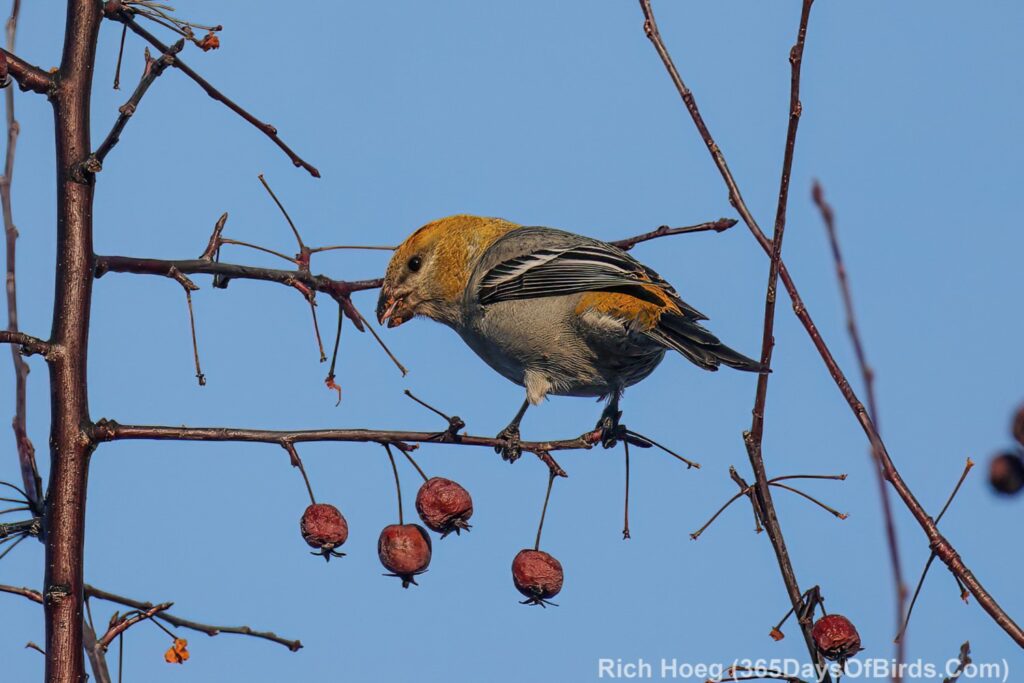
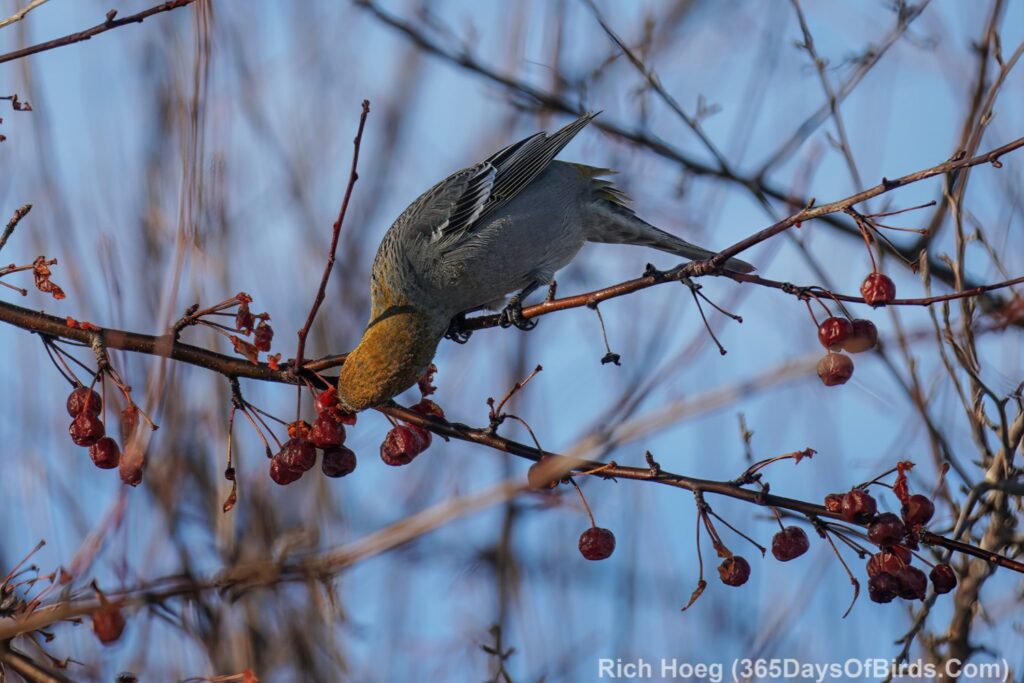
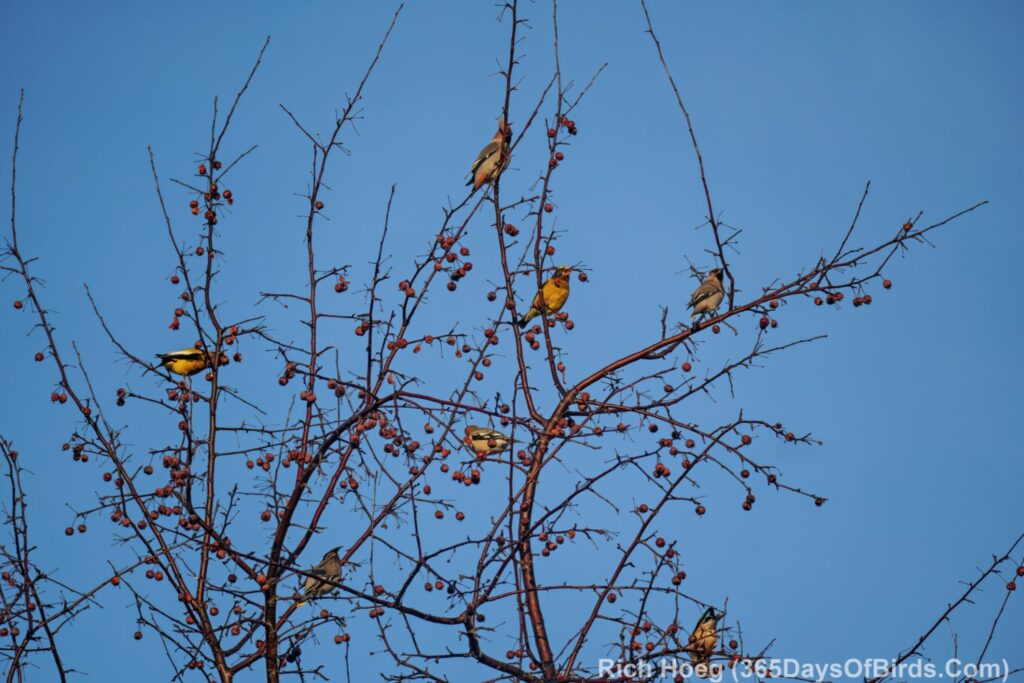
I have never seen a Waxwing before. Coming from Florida next week and will be driving through this forest on my way to Hibbing from Roseau. Hope to see many! And some beautiful northern owls as well.
Look for red berries, or ask around if there are Mountain Ash or Pygmy Crabapples trees anywhere near by … these are the trees attracting the winter birds.
Why don’t the birds eat my Hawthorn fruit
Hawthorn plants are not a plant normally seen in northern Minnesota, but I did some quick research and birds seem to like this kind a fruit. If you don’t get many birds visiting on your Hawthorns, pay attention to whether your yard is inviting for our feathered friends in other ways. For instance my yard is a combination of forest and meadow / tall grasses and flowers (think 6 feet high by August). Thus I provide a varied environment with lots of different cover and food.
So happy you are finding winter birds in this non-winter year.
Best to you and your whole family. Xxoo
love each and every one of these! thank you
The waxwings are exotic looking birds. Lovely!